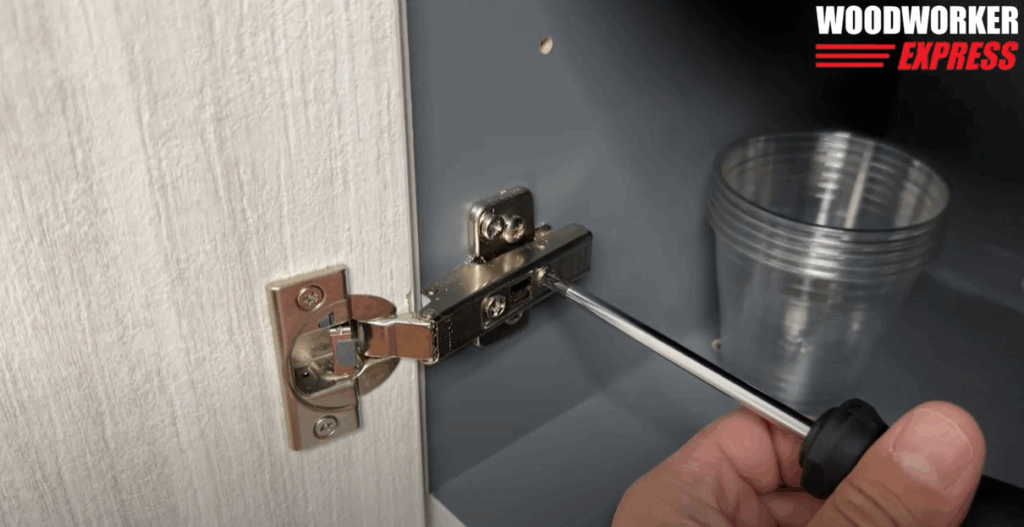Cabinet doors slam shut. The noise echoes through your kitchen. Your family jumps every time someone closes a cabinet. Sound familiar?
Soft-close hinges solve this problem completely. These simple devices transform your kitchen into a peaceful pace while protecting your investment.
Why Replace Cabinet Hinges with Soft Close Technology
Soft-close hinges eliminate cabinet door slamming entirely. The hydraulic mechanism controls door speed during the final inches of closure. Your kitchen becomes noticeably quieter.
Cabinet lifespan increases dramatically with soft-close hinges. Traditional hinges allow doors to slam against frames repeatedly. This impact damages both hinges and cabinet boxes over time. Soft-close technology prevents this damage completely.
Kitchen safety improves with soft-close hinges. Children cannot pinch fingers in slowly closing doors. Adults avoid bruised knuckles from unexpected door closures.
Property values rise with modern cabinet upgrades. Real estate professionals report that updated kitchen hardware increases home appeal significantly. Soft-close hinges represent modern functionality that buyers expect.

Understanding Soft-Close Hinge Technology
Soft-close hinges contain built-in hydraulic dampers. These small cylinders control door movement during the final 4-6 inches of closure. The door moves quickly initially, then slows to a gentle stop.
Two main types of soft-close hinges exist in the market. Integrated soft-close hinges feature built-in damping mechanisms. Add-on dampers attach to existing hinges as separate components.
Quality varies significantly between manufacturers. Premium hinges use precision hydraulic systems that last decades. Budget options may fail within months of installation.

Identifying Your Current Cabinet Hinge Style
Face-frame cabinets require different hinges than frameless cabinets. Face-frame construction features a front frame around cabinet openings. Frameless cabinets have doors that attach directly to side panels.
Overlay measurements determine proper hinge selection. Full overlay doors cover the entire cabinet frame. Half overlay doors cover half the frame width. Inset doors sit flush within the frame opening.
Existing mounting holes guide replacement choices. European-style hinges use 35mm diameter holes. Traditional hinges use smaller pilot holes or surface mounting.
Measuring overlay distance ensures proper fit. Place a ruler against the cabinet frame. Measure how far the door extends beyond the frame edge. This measurement determines your overlay requirement.

Essential Tools and Materials for Success
Cordless drill speeds installation significantly. Choose a drill with adjustable torque settings. This prevents overtightening screws that could strip mounting holes.
Self-centering drill bits ensure accurate pilot holes. These specialized bits center automatically in hinge mounting holes. They eliminate measurement errors that cause misaligned hinges.
Digital calipers provide precise measurements. Measure existing hinge dimensions accurately. This ensures new hinges fit properly without modifications.
Quality screws prevent future problems. Use screws included with new hinges. They match thread pitch and length requirements exactly.
Concealed hinge jigs ensure professional-grade precision.The Kreg Concealed Hinge Jig eliminates guesswork when drilling 35mm cup holes for European-style soft-close hinges.

Step-by-Step Installation Process
Removing Existing Cabinet Hinges
Document door positions before removal. Take photos showing which door belongs in each opening. This prevents confusion during reinstallation.
Remove doors systematically from left to right. This maintains organization throughout the project. Place doors on padded surfaces to prevent scratches.
Unscrew hinges from cabinet frames first. This allows easier access to door-mounted hinge components. Keep all screws in labeled containers for each door.
Clean mounting holes thoroughly before installation. Remove paint, debris, or old adhesive from holes. This ensures new hinges sit flush against surfaces.
Installing New Soft-Close Hinges
Test-fit new hinges before permanent installation. Verify that mounting holes align properly. Check that hinge plates sit flush against door surfaces.
Apply thread-locking compound to critical screws. This prevents screws from loosening due to repeated door movement. Use removable-strength compound for future adjustments.
Install door-mounted hinges first. Mount hinges to doors while they rest on work surfaces. This provides better access than overhead installation.
Align cabinet-mounted plates using spacer blocks. Cut wooden blocks to maintain consistent gaps between doors. This ensures professional-looking results.

Fine-Tuning Soft-Close Performance
Adjust closing speed using built-in controls. Most hinges feature small adjustment screws that control damping force. Turn clockwise to slow closing, counterclockwise to speed up.
Test door alignment from multiple angles. Check gaps between doors and frames from inside cabinets. Verify that doors sit parallel to adjacent surfaces.
Calibrate soft-close engagement distance. Quality hinges allow adjustment of when damping begins. This typically occurs 4-6 inches before full closure.

Troubleshooting Common Installation Problems
Misaligned doors indicate hinge positioning errors. Loosen mounting screws slightly and reposition hinges. European hinges offer three-dimensional adjustment capabilities.
Doors that won’t close completely suggest obstruction issues. Check for interference from drawer slides, pipes, or cabinet contents. Remove obstructions or adjust hinge positioning.
Inconsistent closing speeds point to hinge quality differences. Replace budget hinges with matching premium units. Mixed hinge types create uneven performance.
Squeaking sounds indicate insufficient lubrication. Apply white lithium grease to hinge pivot points annually. Avoid petroleum-based lubricants that attract dirt.
Comparing Soft-Close Options
Integrated hinges provide the cleanest appearance. Built-in dampers eliminate visible add-on components. These hinges cost more but offer superior aesthetics.
Add-on dampers work with existing quality hinges. This option costs less and works well on newer installations. Older hinges may not accommodate add-on components properly.
European-style hinges offer superior adjustability. Three-dimensional adjustment capability simplifies installation and future maintenance. American-style hinges provide fewer adjustment options.
Heavy-duty hinges support solid wood doors better. Thick doors require stronger hinges with more robust damping systems. Standard hinges may fail prematurely on heavy doors.

Revamp Your Kitchen Today
Replacing cabinet hinges with soft-close technology delivers immediate results. Your kitchen becomes quieter, safer, and more functional within hours. The investment pays dividends in comfort and property value.
Success depends on proper planning and quality components. Measure carefully, choose appropriate hinges, and follow installation procedures systematically. Take time for proper adjustment and testing.
Professional results are achievable with patience and attention to detail. Most homeowners successfully complete this upgrade using basic tools. The satisfaction of improved daily kitchen experience makes the effort worthwhile.
Transform your kitchen today with soft-close hinges from Woodworker Express. Your family will appreciate the immediate difference in noise reduction and smooth operation.



